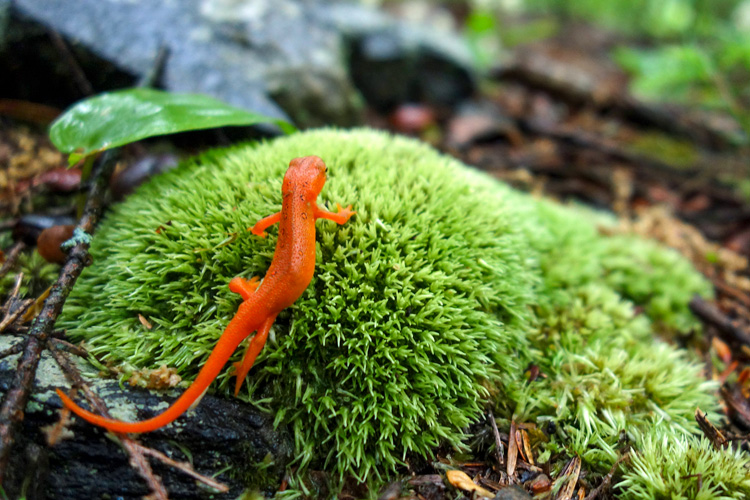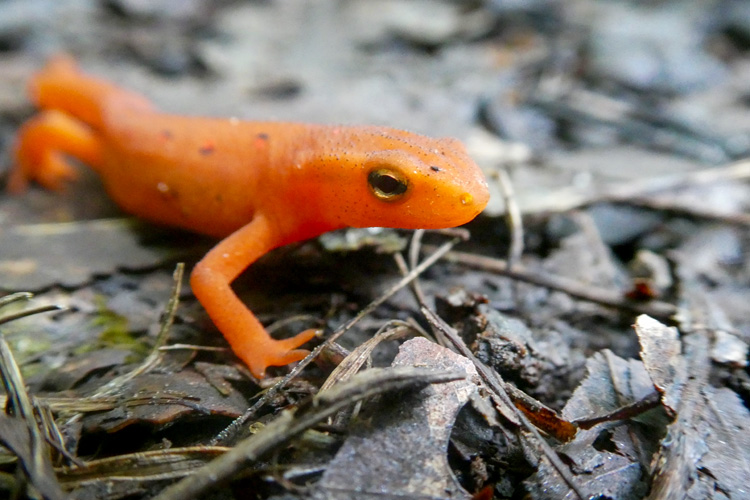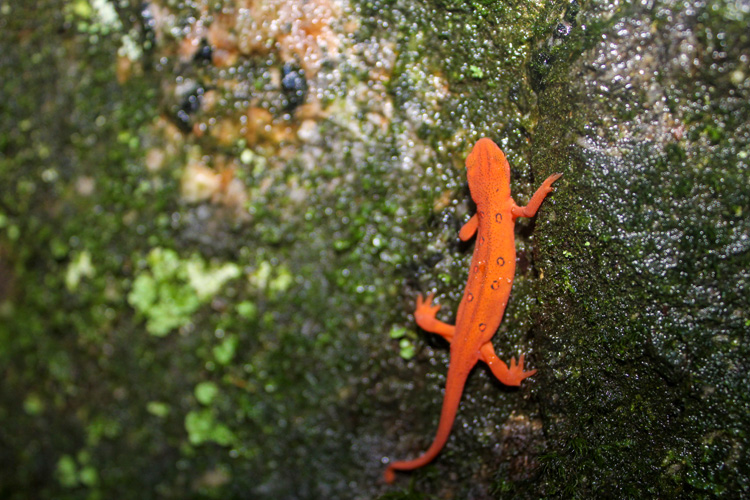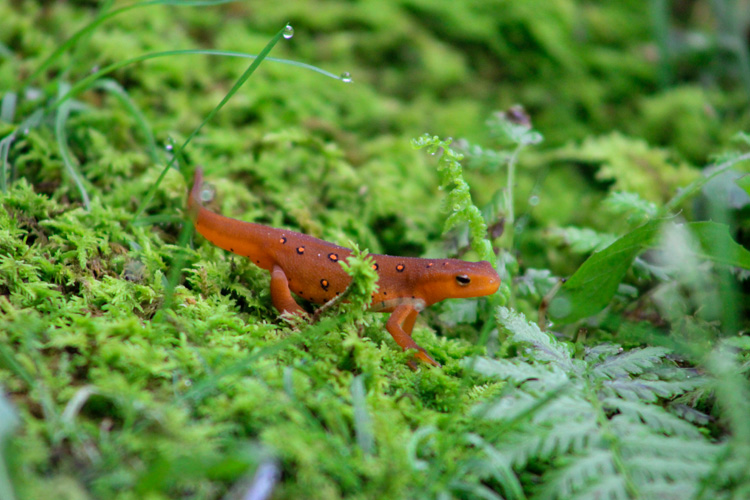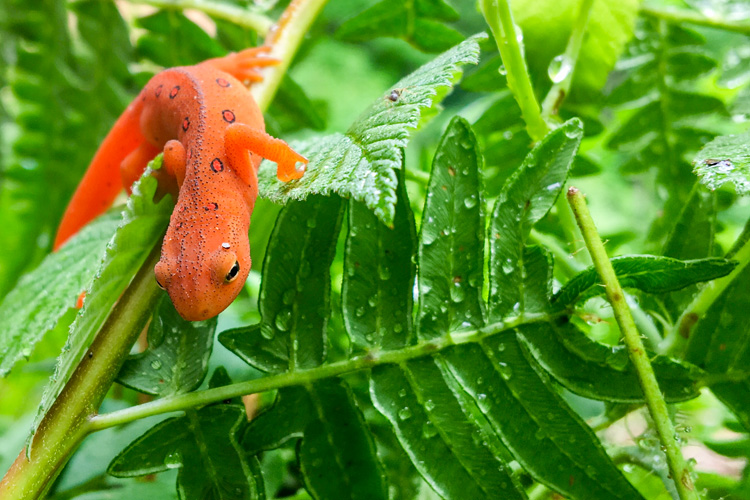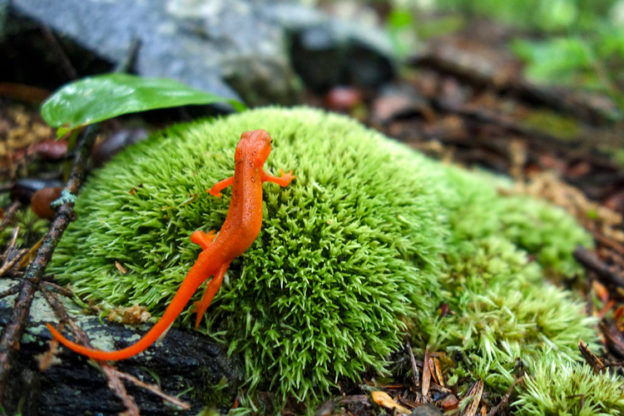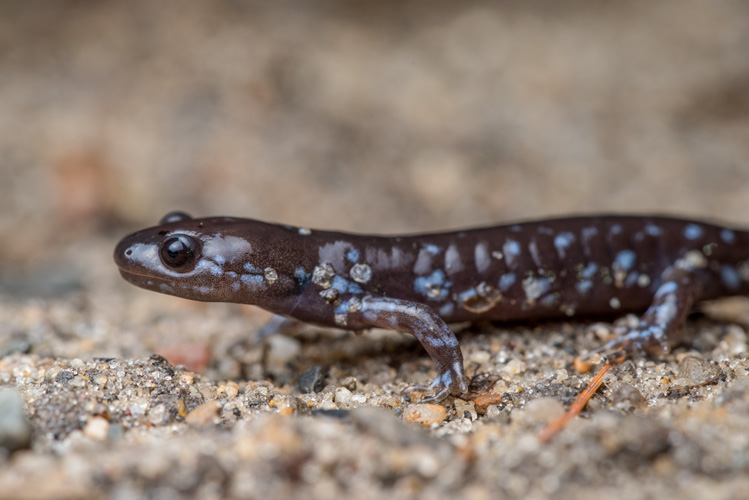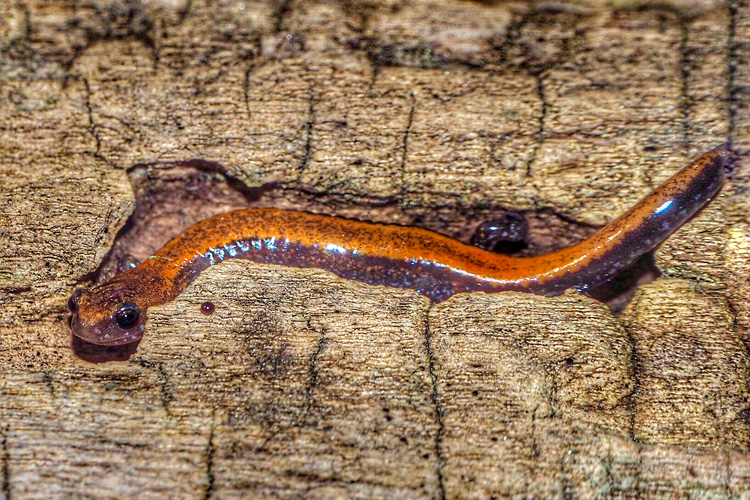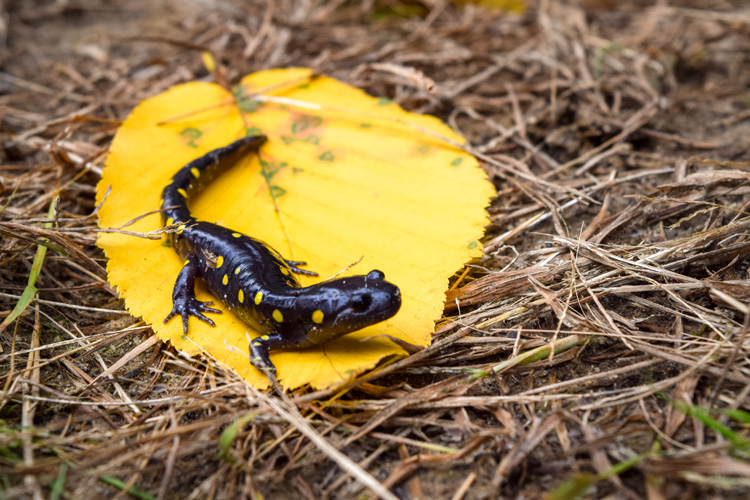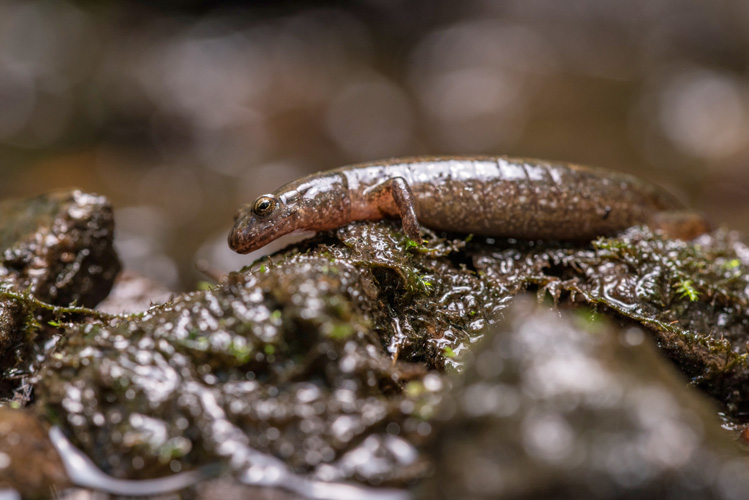After a spring rainstorm, it can seem like the forest is carpeted with fiery-orange Red Efts as they emerge from their hiding places under logs and leaf litter. Efts are actually the juvenile, terrestrial stage of the Eastern Newt’s unusual 3-part life cycle: They begin their lives in the water as tadpoles, shed their gills and spend several years on land as Red Efts, and eventually (for reasons that scientists are still trying to understand) return to the water as adults, transformed to an olive green color with a yellow belly. They are said to be capable of living up to 15 years!
Red Efts are not exactly masters of camouflage: Their striking color, which can range from yellow-orange to brick red, is an example of “aposematism” or warning coloration—it sends a signal to potential predators that they don’t make a very good snack, due to their toxic skin secretions.
Although their toxic skin protects them from most predators, it is also very porous, making them susceptible to environmental toxins, including sunscreen and bug spray. So if you happen upon a Red Eft in a vulnerable place and want to move it to a safer spot, avoid touching it directly with your hands.
Enjoy these five photos of Red Efts/Eastern Newts from our annual Picture This: Your Great Outdoors photo contest and learn more about salamander species of Massachusetts on our website.
